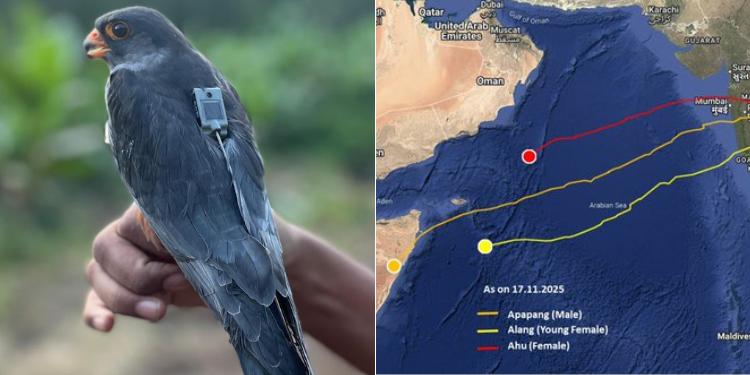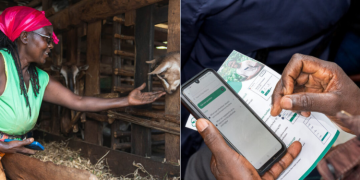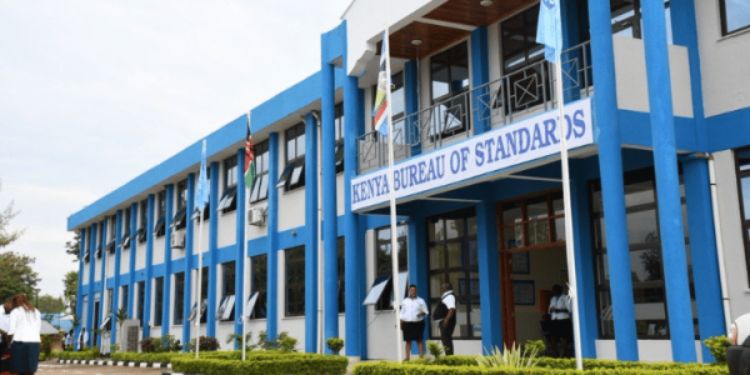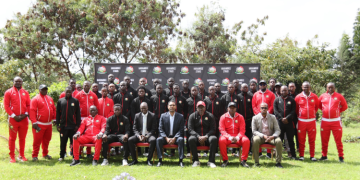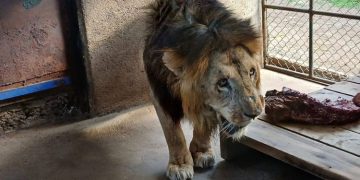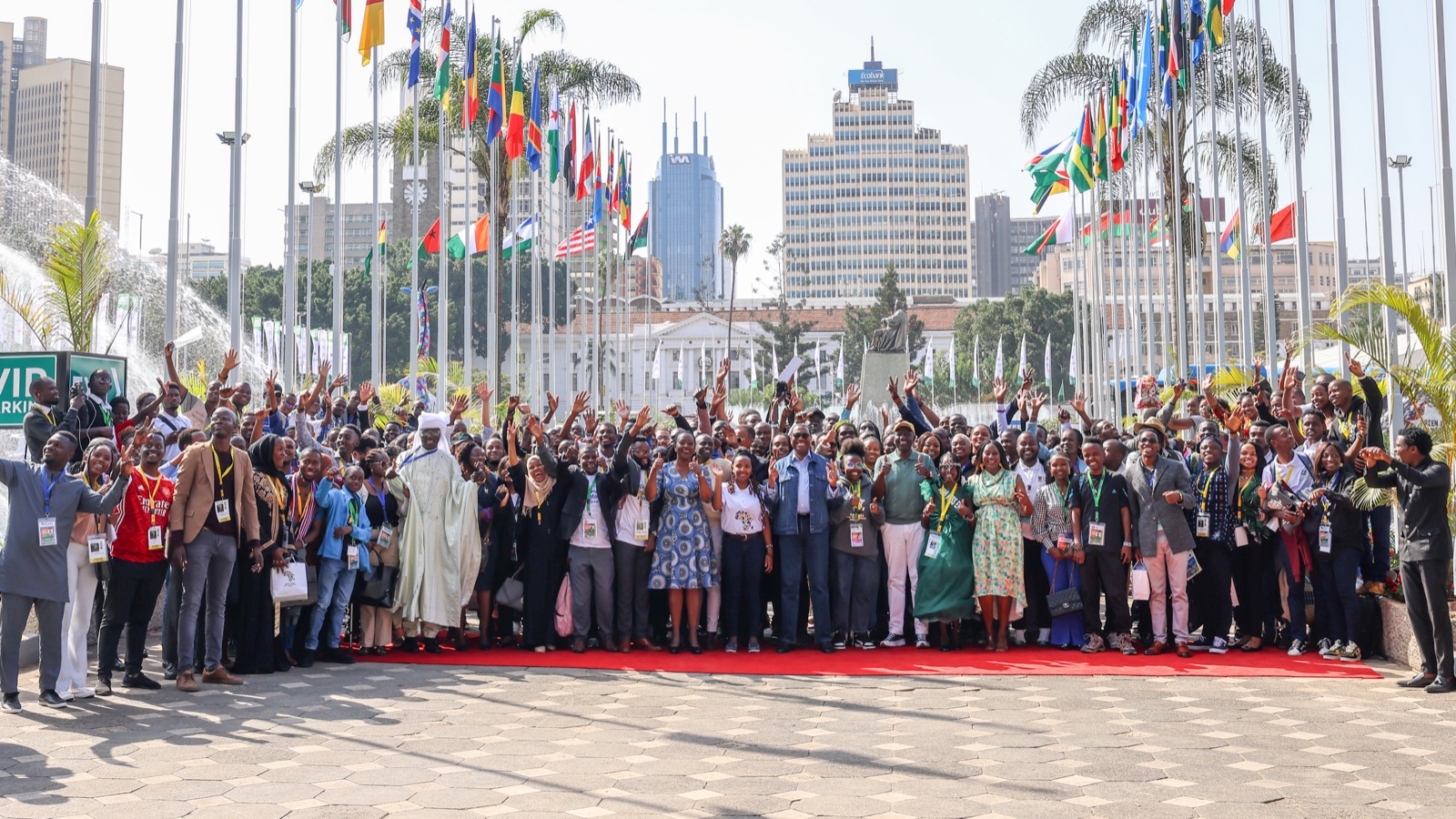Two satellite-tagged Amur falcons from Manipur, India, have completed one of the longest recorded transcontinental migrations for a small raptor, flying thousands of kilometres across India, the Arabian Sea, and the Horn of Africa before entering Kenya.
The birds, named Apapang and Alang, are part of a three-falcon group being monitored under the Manipur Amur Falcon Tracking Project (Phase 2) led by Dr. Suresh Kumar of the Wildlife Institute of India.
According to tracking updates shared on Thursday, November 20, by the Indian Additional Chief Secretary for Environment, Climate Change, and Forests in Tamil Nadu, Supriya Sahu, Apapang completed 6,100 kilometres in 6 days and 8 hours without stopping.
The adult male bird made a continuous flight from Manipur through central India, across the Arabian Sea, over the Horn of Africa, and into Kenya.
Birds from India fly over 6,100 km to Kenya
Tracking data shows Apapang crossed peninsular India and then undertook the full oceanic stretch in a single unbroken flight.
Sahu described the falcon as having “a single unbroken arc across continents.” Earlier updates indicated that by November 17, Apapang had already crossed into Somalia after covering nearly 5,400 kilometres in 5 days and 15 hours during the sea crossing.
On her part, Alang, a young female, completed 5,600 kilometres in 6 days and 14 hours. Her migration included a night halt in Telangana and a three-hour rest in Maharashtra before beginning her sea crossing toward Somalia and onwards to Kenya.
Despite being a first-time migrant, tracking data shows she maintained pace through the oceanic section and crossed into Kenya shortly after Apapang.
Also Read: Uproar After Tourists Block Wildebeest Migration
The Additional Chief Secretary further said that the third bird, Ahu, an adult female, has not yet entered Kenya. She flew 5,100 kilometres in 5 days and 14 hours, taking a more northerly route with a night stop in western Bangladesh, and is currently positioned in Somalia.
“The Amur Falcons are rewriting the limits of endurance. From the forests of Manipur, three satellite-tagged travelers Apapang, Alang and Ahu have taken the world by storm. You will notice Apapang and Alang have crossed into Kenya… while Ahu continues to stay at the northern tip of Somalia,” Sahu said.
“They are likely to stopover at Tsavo National Park in Kenya.”
Indian researcher explains why the flight is significant
Amur falcons weigh around 150 grams but are known for long-distance endurance flights. Once they leave the Indian coast, they undertake a non-stop 3,000-kilometre crossing of the Arabian Sea, unable to rest on water.

The birds undergo intense pre-migratory feeding in Northeast India, especially in Nagaland and Manipur, consuming emergent termites to build the fat reserves needed for their uninterrupted transoceanic journey.
Tracking is conducted with lightweight satellite tags to document routes, stopover sites, and environmental pressures affecting the species. According to Dr. Kumar, such data helps identify threats along migration corridors, including habitat loss, hunting, and changes linked to climate patterns.
“Tracking with lightweight electronic tags helps scientists understand the exact routes and flight paths these birds follow, the environmental factors influencing their journey, and the critical stopover sites they depend on. It also helps identify threats along the way from habitat loss to hunting and provides vital insights into how climate change is shifting migration patterns worldwide,” he said.
Also Read: Migratory Bird with Russian Identification Tag Captured in Kenya
Rapid progress
Updates from November 14–17 showed that all three birds had left Manipur, crossed mainland India, and crossed the Arabian Sea. By November 16, Apapang had flown 3,100 kilometres during a 76-hour non-stop stretch, aided by tailwinds, before beginning the longest oceanic portion of the journey.
The arrival of the two Amur falcons comes days after the Kenya Wildlife Service (KWS) captured a migratory Osprey from Russia in Siaya County.
The bird, which had a Russian identification tag, was found entangled in a fishing net and was transferred to the Raptor Centre at Soysambu Conservancy for examination and rehabilitation before release.
Follow our WhatsApp Channel and X Account for real-time news updates.
